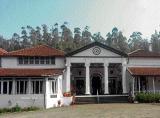
Governor-General William Bentinck’s trip to Bangalore, Mysore and Ooty in 1834 when he coordinated the attack on the ‘problematic’ raja of Coorg, Chikka Veerarajendra is well-documented in the book titled ‘Ootacamund-A History’, written by Sir Frederick Price in 1908.
Chikka Veerarajendra and the East India Company were at loggerheads since 1830.
Governor General William Bentinck who was more interested in reforming India than in annexing new territories, had to deal with the Raja of Coorg who had dared the British by keeping in custody one of their emissaries, Kullapalli Karunakaran Menon.
A long sojourn
Lord William Bentinck set out from Calcutta on 3 February 1834, on board the Curacoa to Madras.
He wanted a first-hand assessment of the situation in Coorg and for this purpose, the commander-in-chief Sir Robert O’Callaghan was in attendance.
The Governor General also had to deal with administrative issues concerning Mysore. The reason for him to visit Ooty for an extended stay was to improve his rather poor health.
Bentinck reached Madras on 15 February 1834 and set out for Bangalore via Vellore.
In Bangalore ,strategies on Coorg were finalised in consultations with Sir Robert O’Callaghan.
Lord Bentinck halted in Mysore and was put up at the precursor to Rajendra Vilas Palace atop Chamundi Hill, which was originally built by Robert H Cole, the earlier British resident at Mysore.
Bentinck set out for Ooty via Gundlepet, and it was while they were travelling on 15 March 1834, that war was declared on Coorg.
Lord Bentinck’s entourage reached Ooty on 22 March. At Ooty, the only suitable accommodation for the staff of the Governor-General and that of the Commander-in-Chief was “Sir William Rambold’s Large House”, which was a grand hotel built in 1832 by an influential British entrepreneur named William Rambold.
However, Rambold soon ran into financial difficulties. The hotel was rented frequently by senior officers of the East India Company.
It was in 1842 that Rambold’s Large House became the Ootacamund Club, or the Ooty Club.
During Lord Bentinck’s sojourn in Ooty, Lord Babington Macaulay arrived at the hill station on 25 June, 1834.
The Governor-General and Macaulay met each other for the first time at Rambold’s Large House.
Macaulay chose a small cottage nearby where he lived for several months to write the Indian Penal Code.
Governor-General Bentinck stayed in Ooty till end of September 1834.
On his return journey, he again passed through Mysore and reached Bangalore on 9 October.
He sailed aboard the Curacao on 26 October from Madras and reached Calcutta on 14 November 1834.
Wild rumours
There are also records of Lord Dalhousie’s sojourn in Ooty from 7 March 1855 to 29 October 1855.
Dalhousie’s visit was primarily for health reasons. However, he was not too comfortable in Ooty and soon shifted to Kotagiri.
During Dalhousie’s stay in Nilgiris, one of his ADCs took permission to visit Coorg, where his brother was a coffee planter.
It was in 1852, that Dalhousie reluctantly gave permission to the Raja of Coorg to travel to England along with his daughter Gowramma.
The Aide-de-camp (ADC), on his return, narrated an amusing incident to his boss. Coorg being a rather remote province, news from the outside world took time to percolate.
Very often, wild rumours floated amongst the small but growing community of British planters. One such rumour was that the British and their allies had lost the Crimean War and that Queen Victoria and her family had fled to India!
However, Dalhousie who had a temporary telegraph line installed at Nilgiris had already received the news that the British and their allies had taken Sevastopol from the Russians.
On his journey back to Calcutta, Dalhousie stopped in Bangalore during early November 1855, and was the guest of Sir Mark Cubbon. Dalhousie narrated the Coorg rumour to the British officers and after inspecting the troops, he formally announced the fall of Sevastopol.
source: http://www.deccanherald.com / Deccan Herald / Home> Supplements> Spectrum / by CP Belliappa / April 2014 (28th)

